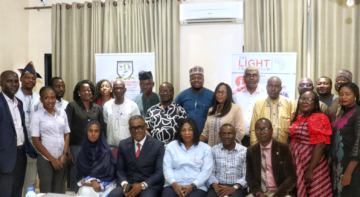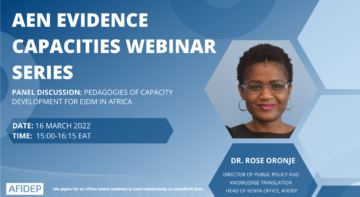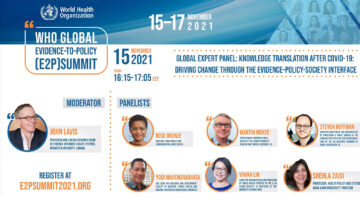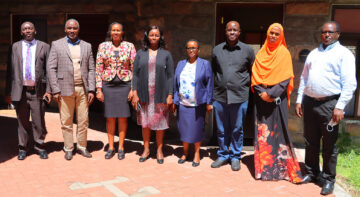Blogs

“Congratulations, we are pleased to inform you that you have just been accepted for a fully-funded PhD”.
The excitement is inexplainable, you may decide to share this on social media or keep it to yourself, but this is a moment you cherish forever. Fast-forward to a few weeks later when you finally join the programme, initially you are pursuing all your magnificent dreams and aspirations. You are sure you will carry out high-quality research, publish multiple papers in high-impact journals, and that your science will have an effect on public health delivery in your country and perhaps the region. All these were the happy thoughts streaming through in my mind. Perhaps what I was unprepared for was how to communicate the science to the lay public. Little did I know I would learn about community and public engagement (CPE) through my PhD experience. While there isn’t a set definition of CPE, according to the African Academy of Science (AAS):
“In science and health research, CPE refers to two-way interactions between scientists and non-scientist/non-specialist publics about science, research and innovation; intended to provide opportunities for mutual learning and benefit.”
Then, reality begins to set in. The PhD programme is harder than you had anticipated, your results are not aligning to what you want or hope they will, and your journal reviewers take much longer to respond; and when they do, this is the feedback you have received:
“Unfortunately, at this time we are unable to accept your manuscript. We can, however, recommend trying our open-access sister publication…”
It does not end there, this means extra publication costs, more reviews, and so on. Like anyone frustrated and feeling disappointed you begin to solely focus on getting the publication done and completing the PhD.
A gentle reminder from Human Resources alerts you that your funding is due to end in a year, and they would like to know what your plans are moving forward. Now here you are, a PhD student; all previous ambitions have taken a backseat or have been forgotten, your mental health may even take a hit. Yet despite all the challenges, you never forget that your research is really important for public health and does need to be communicated to policymakers.
While certain parts of the above scenario are hypothetical, for example, emails from the human resources department, I experienced rejection from a journal without review. I know this is not unique to me and is possibly something every PhD student could relate with.
Throughout my PhD experience, I learned the importance of continuous CPE.
My studies involved gender identity and sexual orientation minorities in Coastal Kenya. As can be expected in the conservative culture that is in coastal Kenya, a mention of the transgender community is enough to get community gatekeepers in a rush to guard the society against decaying moral standards. There was worry within the community that just affording transgender women recognition, validates their existence and probably encourages what was viewed as deviant behaviour.
To surmount these challenges, before any study activities could take place, my team began a series of community and stakeholder engagement meetings. Community gatekeepers included religious leaders, heads of community-based organisations, and local opinion leaders. The meetings were designed to explain the public health problem at hand and the impact of not addressing it. Eventually, we convinced the community gatekeepers of the need to allow the research to proceed. We helped gatekeepers understand how sustained high HIV incidence in pockets of the populations would eventually lead to new infections in the general population. Healthcare providers were wary that the study would needlessly increase their workload. To get buy-in, we described to them the UNAIDS fast track goals to HIV elimination. The Fast track goals also known as the 90-90-90 strategy, seeks to ensure at least 90% of the population that are living with HIV, know their status. Secondly, at least 90% of these newly diagnosed individuals are on adequate antiretroviral therapy (ART), and finally that at least 90% of those on ART, will achieve viral suppression. For healthcare providers, the chance to achieve the UNAIDS fast track goals in their facilities was enough incentive to start the study. The healthcare management team and healthcare providers at the county level understood the need to conduct research with these key populations, but were reluctant to carry it out within the public hospital facilities. I additionally committed myself to keeping all stakeholders informed of study progress and any important findings. In doing this, I was able to carry out the research within public health facilities. Perhaps I was unaware how important the dissemination meetings would be and how much excitement the study results would generate. Consequently, when I finished my research work and held dissemination meetings, every single time, different audiences would ask two questions in different forms:
“What will you do with these findings?
‘’How can they be communicated to those that can implement them?”
I was at a loss on how to proceed. One of the biggest achievements of my work was that the cohort of transgender women I had been following, had produced the first known estimates for HIV incidence in transgender women in sub-Saharan Africa. This implied that it was now possible to quantify the risk of HIV infection in transgender women and plan for interventions. While I had a publication that had the first HIV incidence in transgender women in sub-Saharan Africa, this information was only available to the world of academia. Policy-makers at both national and county Government levels were unaware of this important finding. “How can this be communicated to the national Government? How do I circle back to my original goal of having an impact?”, I asked myself. The solution to this conundrum would present itself in the form of two completely independent events.
Towards the end of the year 2019, the National AIDS and STI Control Programme (NASCOP) summoned transgender community leaders to Nairobi for a workshop. The workshop aimed to develop draft guidelines that could guide the provision of services and programming for Kenyans that identify as transgender. As a result of previous continuous CPE, the community leaders from coastal Kenya suggested the inclusion of my findings as a guiding principle for the document development. Thus, without any lobbying on my part, the incidence estimate paper is now cited in draft guidelines.
In 2020, with support from the AAS, the African Institute for Development Policy (AFIDEP) received support from the Wellcome Trust to train on research uptake and policy engagement. Interested trainees were invited via their host institutions to apply. At the KEMRI-Wellcome Trust (KWTRP) site in Coastal Kenyan, I was one of three mentees accepted for policy development and evidence synthesis. The course included a week-long intensive training, an optional a six-month mentorship program on policy development and a final dissemination workshop. Through this experience, I hope to develop a policy brief that can further strengthen the case for comprehensive programming guidelines for gender identity minorities in Kenya, and hopefully in the East African Region.
Through my experiences, I am learning that high-quality science from the African continent led by African researchers is important, but even more important is the translation of findings to practice, and continuous CPE may be the bridge between the two.
 Dr Makobu Kimani is a Medical Doctor, with Post Graduate training in Public Health (Epidemiology and Biostatistics). Dr Kimani was a fellow under the Enhance DELTAS programme and this blog was written as part of the ENHD 101 cohort 1 training programme.
Dr Makobu Kimani is a Medical Doctor, with Post Graduate training in Public Health (Epidemiology and Biostatistics). Dr Kimani was a fellow under the Enhance DELTAS programme and this blog was written as part of the ENHD 101 cohort 1 training programme.
Related Posts





